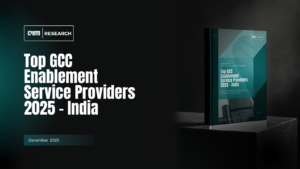GenAI has emerged as a beacon of innovation, offering businesses the promise of transformative capabilities. Yet, as organizations hasten to harness its potential, a glaring problem becomes evident: the journey from pilot to full-scale production is riddled with unexpected pitfalls, particularly in crafting a robust business case. This article delves into some of the reasons why GenAI initiatives fail to scale from promising pilots to production systems.
In 2023, many senior executives across various sectors were excited by the potential of GenAI to revolutionize business operations. With substantial investments and numerous pilots underway, the anticipation was palpable. However, the reality that unfolded was starkly different—most GenAI pilots struggled to progress beyond the experimental phase. Insights from a panel convened by Everest Group, in collaboration with Yates Ltd. and CalypsoAI, featuring 50 CIOs and CTOs from Fortune 500 companies, shed light on this dilemma. Despite their initial enthusiasm, these leaders encountered significant barriers, leading to a phenomenon termed “pilot fatigue.”
Let’s dive deeper into one of the leading causes of failure to scale beyond the pilot phase – the failure of the business case. We will then outline a systematic method for developing comprehensive business cases.
The Crux of the Issue: Business Case Failures
Lack of a Detailed Business Case
A fundamental pitfall for many GenAI projects is the absence of a detailed, well-constructed business case before the initiation of pilot projects. This lack stems from a rush to innovate without thoroughly assessing the project’s feasibility, potential impact, and alignment with strategic business goals. Without this groundwork, projects often proceed with unclear objectives, undefined metrics for success, and an insufficient understanding of the necessary resources and costs.
Short-sighted Cost Projections
Organizations frequently underestimate the operational costs associated with scaling GenAI solutions. This miscalculation arises from failing to anticipate the exponential increase in data processing and storage requirements as the user base expands. Additionally, the cost implications of ensuring privacy, security, and compliance at scale are often overlooked, leading to budget overruns and compromised project viability.
Ignoring the Full Spectrum of Costs
The allure of leveraging cutting-edge LLMs and custom models can lead companies into a cycle of perpetual development, where the pursuit of the latest advancements outpaces the evaluation of their practical value. This cycle inflates development and maintenance costs, disrupting the original ROI estimates and potentially leading to project abandonment when costs become prohibitive.
Integration Complexity
Another critical oversight is the failure to account for the complexity of integrating GenAI solutions with existing systems and workflows. Projects developed in isolation face significant challenges when integrating outputs into operational processes, necessitating additional manual effort and resources. This not only increases costs but also delays the realization of anticipated benefits.
A Roadmap to Success: Developing a Comprehensive Business Case
To navigate the complexities of implementing GenAI solutions successfully, organizations must adopt a structured approach to business case development, ensuring that both the benefits and costs are accurately assessed and articulated.
Identifying and Quantifying Benefits
A robust business case begins with a clear vision of the value the GenAI solution aims to deliver. This involves quantifying direct benefits such as cost savings from reduced employee workload and indirect benefits like enhanced customer satisfaction and loyalty. The business case should articulate how the solution will improve operational efficiency, drive revenue growth, and enhance competitive advantage.
Accurate Cost Projections
A comprehensive business case requires an accurate assessment of all costs associated with the GenAI project, from development to deployment and beyond. This includes upfront investments in technology and infrastructure, ongoing operating expenses, and the costs of regular updates and maintenance. Special attention should be paid to scalability and the potential for cost escalation as usage grows.
Strategic Investment in Integration and Training
Investments in integration and employee training are pivotal for the seamless adoption of GenAI solutions. The business case should detail the strategies and resources required to integrate the GenAI outputs into existing systems effectively, ensuring that the solution enhances rather than disrupts operational processes. Furthermore, a plan for comprehensive training programs is essential to equip employees with the knowledge and skills to leverage the new technology effectively.
Conclusion
The journey from GenAI pilot to production is fraught with challenges that extend beyond technical implementation to encompass strategic planning and financial foresight. The collaboration between CFOs, CIOs, and dedicated project teams is crucial in developing a business case that not only justifies the investment in GenAI but also aligns with the organization’s long-term objectives. By adopting a holistic approach that meticulously evaluates benefits, anticipates costs, and ensures integration with existing systems, businesses can navigate the complexities of GenAI implementation, transforming innovative pilots into valuable, scalable solutions.





